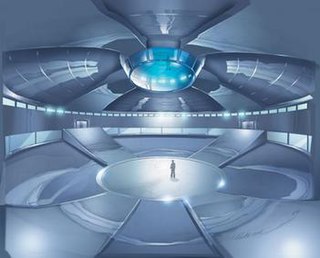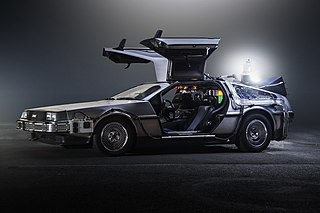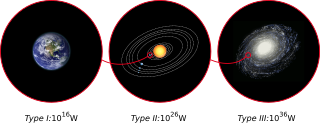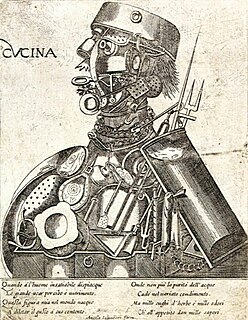 W
WTechnology in science fiction delves into the possibilities and implications of new technological concepts. Authors have taken, or created, new innovations and technologies, and elaborated on what they might be and how they might be used. This exchange goes in both directions – sometimes the technology appears first in science fiction, then becomes reality and other times the real technology comes first, and science fiction authors speculate about how it might be used, and how it might affect the human condition. Likewise, the accuracy of the technology portrayed spans a wide range – sometimes it is existing technology, sometimes it is a physically realistic portrayal of a far-out technology, and sometimes it is simply a plot device that looks scientific, but has no basis in science. Examples drawn from space travel in science fiction include:Realistic case: Space suits. These are almost always based on existing suits, or near-term extrapolation of their capabilities. Extrapolation: Travel within the Solar System. As of 2019, humans have only traveled in Earth orbit or from Earth to Moon and back. However, travelling within the Solar System violates no physical principles. Plot device: faster-than-light drive. It is unsupported by physics as we know it, but needed for galaxy-wide or intergalactic plots with human lifespans.
 W
WA cloaking device is a hypothetical or fictional stealth technology that can cause objects, such as spaceships or individuals, to be partially or wholly invisible to parts of the electromagnetic (EM) spectrum. However, over the entire spectrum, a cloaked object scatters more than an uncloaked object.
 W
WThe Cone of Silence is one of many recurring joke devices from Get Smart, a 1960s American comedy television series about an inept spy. The essence of the joke is that the apparatus, designed for secret conversations, makes it impossible for those inside the device – and easy for those outside the device – to hear the conversation.
 W
WCryonics is the low-temperature freezing and storage of a human corpse or severed head, with the speculative hope that resurrection may be possible in the future. Cryonics is regarded with skepticism within the mainstream scientific community. It is generally viewed as a pseudoscience, and its practice has been characterized as quackery.
 W
WThe Danger Room is a fictional training facility appearing in American comic books published by Marvel Comics. It first appeared in The X-Men #1 and was created by Stan Lee and Jack Kirby. The facility is depicted as built for the X-Men as part of the various incarnations of the X-Mansion. Its primary purpose is to train the X-Men, initially using traps, projectile firing devices, flamethrowers, and mechanical dangers such as presses and collapsing walls. These were replaced by holographics, when the Danger Room was rebuilt using Shi'ar technology. It gained sentience in Astonishing X-Men as Danger.
 W
WThe Dean drive was a device created and promoted by inventor Norman Lorimer Dean (1902–1972) that he claimed to be a reactionless drive. Dean claimed that his device was able to generate a uni-directional force in free space, in violation of Newton's third law of motion from classical physics. His claims generated notoriety because, if true, such a device would have had enormous applications, completely changing human transport, engineering, space travel and more. Dean made several controlled private demonstrations of a number of different devices; however, no working models were ever demonstrated publicly or subjected to independent analysis and Dean never presented any rigorous theoretical basis for their operation. Analysts conclude that the motion seen in Dean's device demonstrations was likely reliant on asymmetrical frictional resistance between the device and the surface on which the device was set, resulting in the device moving in one direction when in operation, driven by the vibrations of the apparatus.
 W
WThe Feraliminal Lycanthropizer is a fictional psychotechnographic machine invented by American writer David Woodard, whose 1990 pamphlet of the same title speculates on its history and purpose. The brief, anonymously published work describes a vibration referred to as "thanato-auric waves", which the machine electrically generates by combining three infrasonic sine waves with tape loops of unspecified spoken text.This combination of drastically contrasting emotional trigger mechanisms results in an often profound behavioral enhancement which occurs strikingly soon after the user enters and remains in the auricular field of the machine.
 W
WIn the Back to the Future franchise, the DeLorean time machine is a time travel device made by retrofitting a DMC DeLorean vehicle with a flux capacitor. The car requires 1.21 gigawatts of power and needs to travel 88 miles per hour (142 km/h) to initiate time travel.
 W
WArtificial gravity is the creation of an inertial force that mimics the effects of a gravitational force, usually by rotation. Artificial gravity, or rotational gravity, is thus the appearance of a centrifugal force in a rotating frame of reference, as opposed to the force experienced in linear acceleration, which by the equivalence principle is indistinguishable from gravity. In a more general sense, "artificial gravity" may also refer to the effect of linear acceleration, e.g. by means of a rocket engine.
 W
WThe Kardashev scale is a method of measuring a civilization's level of technological advancement based on the amount of energy it is able to use. The measure was proposed by Soviet astronomer Nikolai Kardashev in 1964.
 W
WMarch of the Machines: Why the New Race of Robots Will Rule the World, published in paperback as March of the Machines: The Breakthrough in Artificial Intelligence (2004), is a book by Kevin Warwick. It presents an overview of robotics and artificial intelligence (AI), often focusing on anecdotes of Warwick's own work, and then imagines future scenarios. In particular, Warwick finds it likely that such AIs will become smart enough to replace humans, and humans may be unable to stop them.
 W
WThe Millennial Project: Colonizing the Galaxy in Eight Easy Steps by Marshall T. Savage is a book in the field of exploratory engineering that gives a series of concrete stages the author believes will lead to interstellar colonization. Many specific scientific and engineering details are presented, as are numerous issues involved in space colonization.
 W
WMind uploading, also known as whole brain emulation (WBE), is the theoretical futuristic process of scanning a physical structure of the brain accurately enough to create an emulation of the mental state and transferring or copying it to a computer in a digital form. The computer would then run a simulation of the brain's information processing, such that it would respond in essentially the same way as the original brain and experience having a sentient conscious mind.
 W
WIn Arthur C. Clarke's Space Odyssey, Monoliths are machines built by an unseen extraterrestrial species. In the series of novels, three Monoliths are discovered in the Solar System by hominids and humans. The response of the characters to their discovery drives the plot of the series. It also influences the fictional history of the series, particularly by encouraging humankind to progress with technological development and space travel.
 W
WMother Boxes are fictional devices in Jack Kirby's Fourth World setting in the DC Universe.
 W
WA powered exoskeleton is a wearable mobile machine that is powered by a system of electric motors, pneumatics, levers, hydraulics, or a combination of technologies that allow for limb movement with increased strength and endurance. Its design aims to provide back support, sense the user's motion, and send a signal to motors which manage the gears. The exoskeleton supports the shoulder, waist and thigh, and assists movement for lifting and holding heavy items, while lowering back stress.
 W
WMen in Black is a semi-comic science fiction media franchise that originated with the Malibu/Marvel comic book created by American author Lowell Cunningham. The franchise focuses on the fictional non-governmental organization of the same name which monitors and regulates paranormal and alien activity on Earth while preventing civilians from finding out about it. The most notable agents within the organization are Jay, Kay, and Zed. The franchise has been adapted into other media including a series of four films, an animated television series, and video games.
 W
WThe sonic screwdriver is a fictional multifunctional tool in the British science fiction television programme Doctor Who and its spin-offs, used by the Doctor. Like the TARDIS, it has become one of the icons of the programme, and spin-off media such as The Sarah Jane Adventures and Torchwood have replicated its functions in devices such as the sonic lipstick, sonic blaster, sonic probe, and sonic modulator.
 W
WA Stargate is an Einstein–Rosen bridge portal device within the Stargate fictional universe that allows practical, rapid travel between two distant locations. The devices first appear in the 1994 Roland Emmerich film Stargate, and thereafter in the television series Stargate SG-1, Stargate Atlantis, and Stargate Universe. In these productions, the Stargate functions as a plot device, allowing the main characters to visit alien planets without the need for spaceships or any other type of technology. The device allows for near-instantaneous travel across both interstellar and extragalactic distances.
 W
WSubvocal recognition (SVR) is the process of taking subvocalization and converting the detected results to a digital output, aural or text-based.
 W
WTalkboy is a line of handheld voice recorder and sound novelty toys manufactured by Tiger Electronics in the 1990s.
 W
WA tractor-beam is a device with the ability to attract one object to another from a distance. The concept originates in fiction: The term was coined by E. E. Smith in his novel Spacehounds of IPC (1931). Since the 1990s, technology and research has labored to make it a reality, and have had some success on a microscopic level. Less commonly, a similar beam that repels is called a pressor beam or repulsor-beam. Gravity impulse and gravity propulsion beams are traditionally areas of research from fringe physics that coincide with the concepts of tractor and repulsor-beams.
 W
W"USS Callister" is the first episode of the fourth series of the dystopian anthology series Black Mirror. Written by series creator Charlie Brooker and William Bridges and directed by Toby Haynes, it first aired on Netflix, along with the rest of series four, on 29 December 2017.
 W
WBlade Runner is a 1982 science fiction film directed by Ridley Scott, and adapted by Hampton Fancher and David Peoples. Starring Harrison Ford, Rutger Hauer, Sean Young, and Edward James Olmos, it is an adaptation of Philip K. Dick's 1968 novel Do Androids Dream of Electric Sheep? The film is set in a dystopian future Los Angeles of 2019, in which synthetic humans known as replicants are bio-engineered by the powerful Tyrell Corporation to work at space colonies. When a fugitive group of advanced replicants led by Roy Batty (Hauer) escapes back to Earth, burnt-out cop Rick Deckard (Ford) reluctantly agrees to hunt them down.
 W
WThe Wayback Machine or WABAC Machine is a fictional time machine from the segment "Peabody's Improbable History", a recurring feature of the 1960s cartoon series The Rocky and Bullwinkle Show. The Wayback Machine is a plot device used to transport the characters Mr. Peabody and Sherman back in time to visit important events in human history.